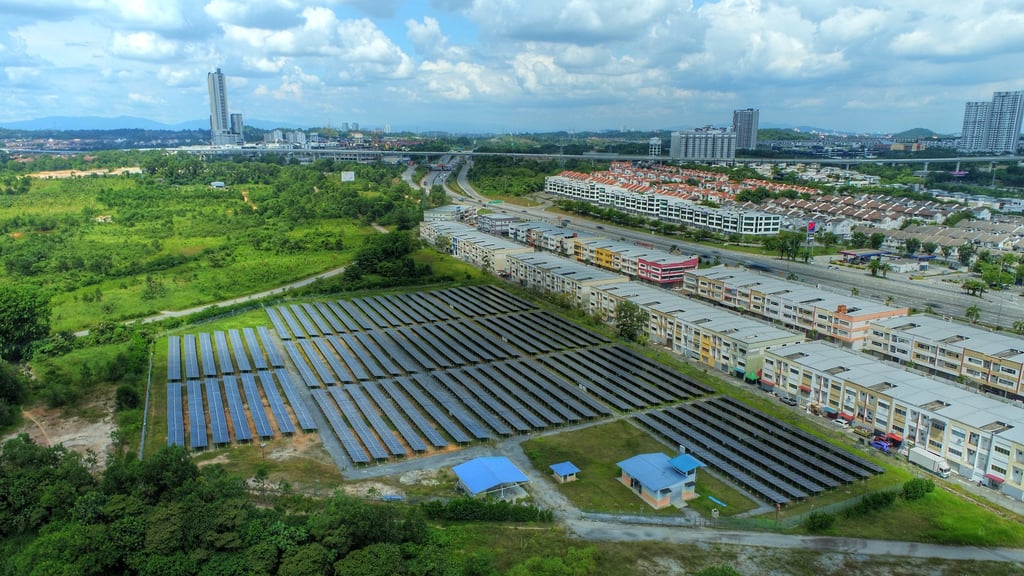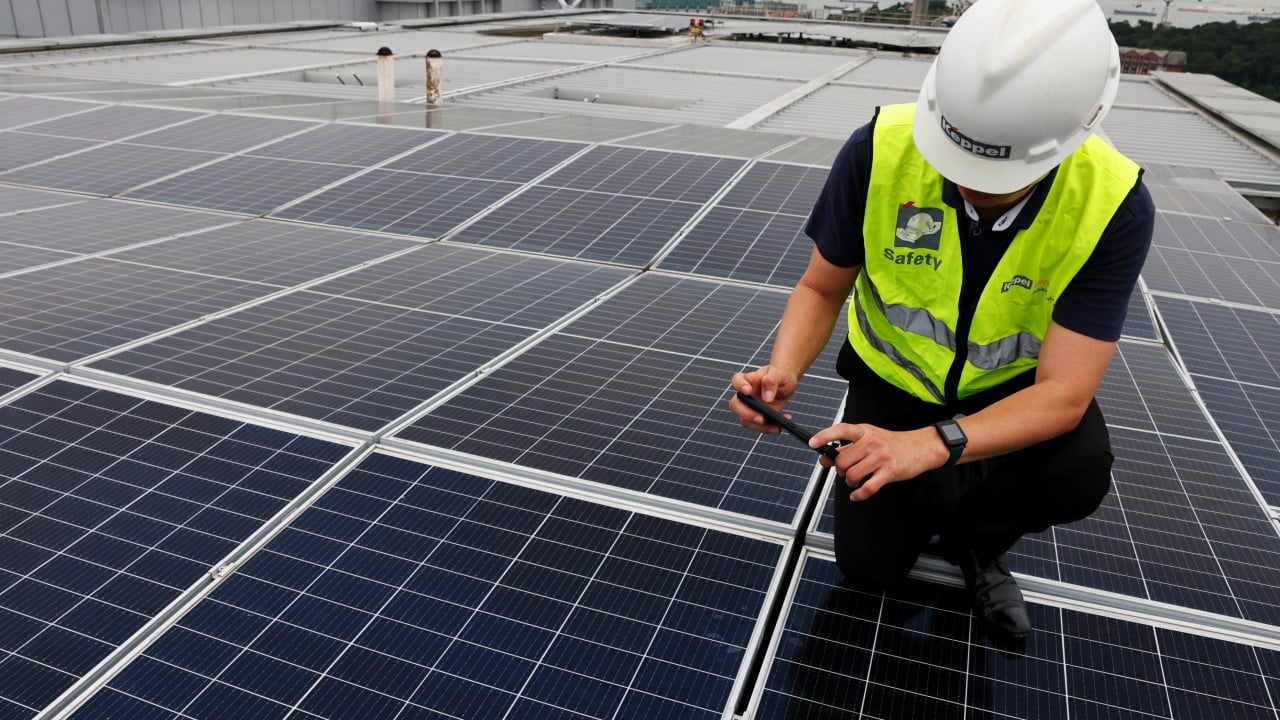As Asia-Pacific nations gear up to embrace the artificial intelligence boom, the explosive growth in energy-intensive data centres that will come hand in hand is generating concerns about the region’s clean energy transition.
From Singapore to India, nations are looking to keep more sensitive data within their borders as risks abound in a world fraught with geopolitical tensions including those between the world’s two largest economies, the US and China.
The push to store and process data domestically will ramp up demand for data centres, which put enormous pressure on resources such as land, water and particularly energy.
This begs the question: can the region’s renewable energy capacity expand rapidly enough to meet the increased demand and still achieve net-zero goals?
According to a Moody’s report published last month, data centres in the Asia-Pacific region are expected to double in capacity by 2028.
The capacity in emerging data centre markets, including India, Indonesia, Malaysia, Thailand and the Philippines, will record growth rates of 29 per cent to 48 per cent through 2025, given their smaller existing capacities, the report said.

New entrants into the markets are likely to tap non-renewable sources of energy to meet these data centres’ massive power needs, introducing a new layer of carbon transition risks, the report added.
That does not bode well for a region that still meets the bulk of its energy needs through fossil fuels including coal, gas and diesel.
One obvious temptation for many nations could be to switch to relatively cleaner power sources such as natural gas, but climate activists say that is far from an ideal solution since they can still contribute to emissions and perpetuate reliance on fossil fuels.
So can anything be done to mitigate these data-driven emissions?
Some countries such as Australia and Singapore have mandated that new data centre capacity must adhere to certain guidelines for minimising emissions.
Singapore ended a moratorium on data centres in January 2022 but indicated that data centres within its borders must meet energy efficiency guidelines, likely translating to longer-term and higher demand for renewable energy.
While the pace of data localisation may vary from country to country, a slew of nations in the region are likely to take a leaf out of Singapore’s playbook.
The challenge, however, is that renewables are intermittent in nature, posing a challenge for data centres that require a constant stream of steady and reliable energy. Power grids in many parts of the region are not yet fully capable of integrating large amounts of renewable energy, experts said.
Despite the challenges, a range of innovative solutions are promising to alleviate this issue, including energy storage technologies for renewables.

Governments can also invest in hybrid energy solutions that combine renewable energy with fossil fuel power and invest in the modernisation of their power grids.
Blessed with abundant sunshine, wind and long coastlines, the region has huge potential for generating renewable energy.
India, China, Japan, and Australia, have been consistently expanding their renewable energy capacity through policies to reduce carbon emissions.
“It varies from country to country but, overall, several countries in the region are well positioned to make this happen,” said Carlos Torres Diaz, head of gas and power markets research at Rystad Energy.
China’s expansion of solar and wind power capacity this year is expected to give it the potential to start displacing some coal power generation, while India’s reliance on coal power is set to continue in the short-term as power demand outpaces renewables generation, he added.
“Countries need to set clear targets for renewable energy capacity and set in place the right incentives for developers,” said Diaz, adding that developers need clear market rules and mechanisms to ensure projects are profitable.
Vineet Mittal, chairman of India’s renewables energy firm Avaada Group, also expressed optimism about renewables taking on a bigger share of the energy burden generated by AI-driven technologies.
“While there is potential for an increase in fossil fuel consumption due to the expansion of energy-intensive data centres, the Asia-Pacific region also has significant opportunities to integrate more renewable energy sources,” Mittal said.
AI has the potential to drive a slew of daily activities from education to financial services that could open up access to remote communities. But clearly, its use must be aligned with climate goals, otherwise the cure may become worse than the malady.


